Dong Guo
AnchorAttention: Difference-Aware Sparse Attention with Stripe Granularity
May 29, 2025Abstract:Large Language Models (LLMs) with extended context lengths face significant computational challenges during the pre-filling phase, primarily due to the quadratic complexity of self-attention. Existing methods typically employ dynamic pattern matching and block-sparse low-level implementations. However, their reliance on local information for pattern identification fails to capture global contexts, and the coarse granularity of blocks leads to persistent internal sparsity, resulting in suboptimal accuracy and efficiency. To address these limitations, we propose \textbf{AnchorAttention}, a difference-aware, dynamic sparse attention mechanism that efficiently identifies critical attention regions at a finer stripe granularity while adapting to global contextual information, achieving superior speed and accuracy. AnchorAttention comprises three key components: (1) \textbf{Pattern-based Anchor Computation}, leveraging the commonalities present across all inputs to rapidly compute a set of near-maximum scores as the anchor; (2) \textbf{Difference-aware Stripe Sparsity Identification}, performing difference-aware comparisons with the anchor to quickly obtain discrete coordinates of significant regions in a stripe-like sparsity pattern; (3) \textbf{Fine-grained Sparse Computation}, replacing the traditional contiguous KV block loading approach with simultaneous discrete KV position loading to maximize sparsity rates while preserving full hardware computational potential. With its finer-grained sparsity strategy, \textbf{AnchorAttention} achieves higher sparsity rates at the same recall level, significantly reducing computation time. Compared to previous state-of-the-art methods, at a text length of 128k, it achieves a speedup of 1.44$\times$ while maintaining higher recall rates.
Seed1.5-VL Technical Report
May 11, 2025Abstract:We present Seed1.5-VL, a vision-language foundation model designed to advance general-purpose multimodal understanding and reasoning. Seed1.5-VL is composed with a 532M-parameter vision encoder and a Mixture-of-Experts (MoE) LLM of 20B active parameters. Despite its relatively compact architecture, it delivers strong performance across a wide spectrum of public VLM benchmarks and internal evaluation suites, achieving the state-of-the-art performance on 38 out of 60 public benchmarks. Moreover, in agent-centric tasks such as GUI control and gameplay, Seed1.5-VL outperforms leading multimodal systems, including OpenAI CUA and Claude 3.7. Beyond visual and video understanding, it also demonstrates strong reasoning abilities, making it particularly effective for multimodal reasoning challenges such as visual puzzles. We believe these capabilities will empower broader applications across diverse tasks. In this report, we mainly provide a comprehensive review of our experiences in building Seed1.5-VL across model design, data construction, and training at various stages, hoping that this report can inspire further research. Seed1.5-VL is now accessible at https://www.volcengine.com/ (Volcano Engine Model ID: doubao-1-5-thinking-vision-pro-250428)
Memory-updated-based Framework for 100% Reliable Flexible Flat Cables Insertion
Feb 18, 2025Abstract:Automatic assembly lines have increasingly replaced human labor in various tasks; however, the automation of Flexible Flat Cable (FFC) insertion remains unrealized due to its high requirement for effective feedback and dynamic operation, limiting approximately 11% of global industrial capacity. Despite lots of approaches, like vision-based tactile sensors and reinforcement learning, having been proposed, the implementation of human-like high-reliable insertion (i.e., with a 100% success rate in completed insertion) remains a big challenge. Drawing inspiration from human behavior in FFC insertion, which involves sensing three-dimensional forces, translating them into physical concepts, and continuously improving estimates, we propose a novel framework. This framework includes a sensing module for collecting three-dimensional tactile data, a perception module for interpreting this data into meaningful physical signals, and a memory module based on Bayesian theory for reliability estimation and control. This strategy enables the robot to accurately assess its physical state and generate reliable status estimations and corrective actions. Experimental results demonstrate that the robot using this framework can detect alignment errors of 0.5 mm with an accuracy of 97.92% and then achieve a 100% success rate in all completed tests after a few iterations. This work addresses the challenges of unreliable perception and control in complex insertion tasks, highlighting the path toward the development of fully automated production lines.
LLaVA-Critic: Learning to Evaluate Multimodal Models
Oct 03, 2024Abstract:We introduce LLaVA-Critic, the first open-source large multimodal model (LMM) designed as a generalist evaluator to assess performance across a wide range of multimodal tasks. LLaVA-Critic is trained using a high-quality critic instruction-following dataset that incorporates diverse evaluation criteria and scenarios. Our experiments demonstrate the model's effectiveness in two key areas: (1) LMM-as-a-Judge, where LLaVA-Critic provides reliable evaluation scores, performing on par with or surpassing GPT models on multiple evaluation benchmarks; and (2) Preference Learning, where it generates reward signals for preference learning, enhancing model alignment capabilities. This work underscores the potential of open-source LMMs in self-critique and evaluation, setting the stage for future research into scalable, superhuman alignment feedback mechanisms for LMMs.
F3T: A soft tactile unit with 3D force and temperature mathematical decoupling ability for robots
Sep 05, 2024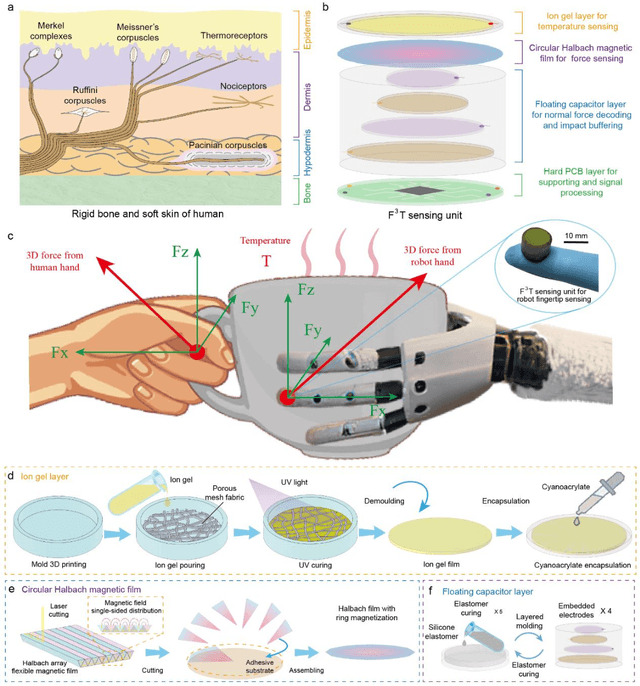
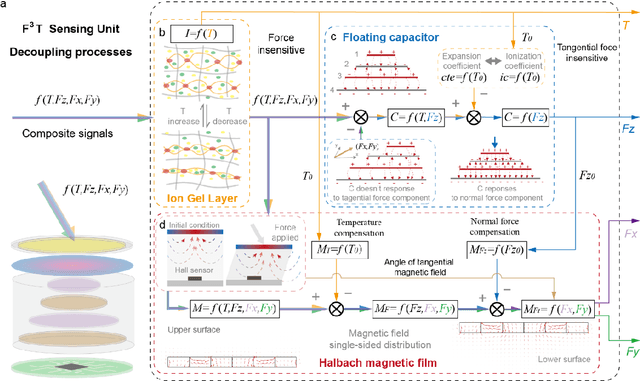
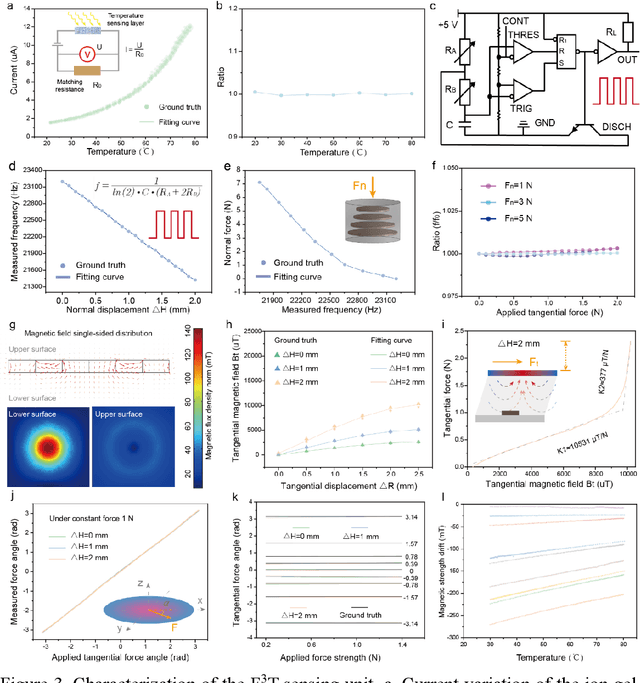
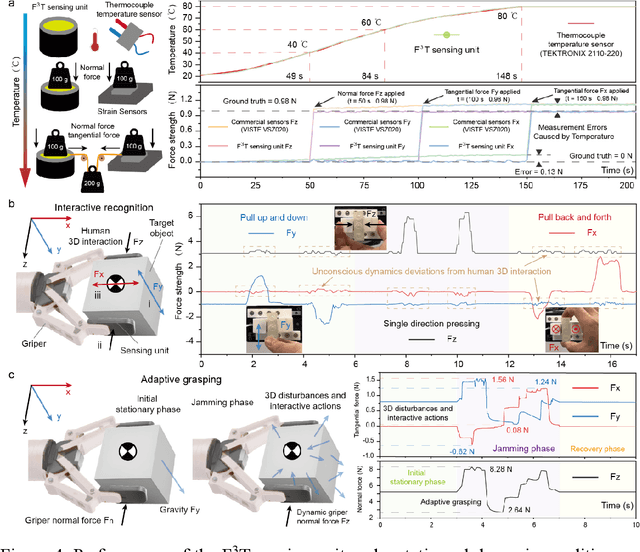
Abstract:The human skin exhibits remarkable capability to perceive contact forces and environmental temperatures, providing intricate information essential for nuanced manipulation. Despite recent advancements in soft tactile sensors, a significant challenge remains in accurately decoupling signals - specifically, separating force from directional orientation and temperature - resulting in fail to meet the advanced application requirements of robots. This research proposes a multi-layered soft sensor unit (F3T) designed to achieve isolated measurements and mathematical decoupling of normal pressure, omnidirectional tangential forces, and temperature. We developed a circular coaxial magnetic film featuring a floating-mountain multi-layer capacitor, facilitating the physical decoupling of normal and tangential forces in all directions. Additionally, we incorporated an ion gel-based temperature sensing film atop the tactile sensor. This sensor is resilient to external pressure and deformation, enabling it to measure temperature and, crucially, eliminate capacitor errors induced by environmental temperature changes. This innovative design allows for the decoupled measurement of multiple signals, paving the way for advancements in higher-level robot motion control, autonomous decision-making, and task planning.
LLaVA-OneVision: Easy Visual Task Transfer
Aug 06, 2024



Abstract:We present LLaVA-OneVision, a family of open large multimodal models (LMMs) developed by consolidating our insights into data, models, and visual representations in the LLaVA-NeXT blog series. Our experimental results demonstrate that LLaVA-OneVision is the first single model that can simultaneously push the performance boundaries of open LMMs in three important computer vision scenarios: single-image, multi-image, and video scenarios. Importantly, the design of LLaVA-OneVision allows strong transfer learning across different modalities/scenarios, yielding new emerging capabilities. In particular, strong video understanding and cross-scenario capabilities are demonstrated through task transfer from images to videos.
FPL+: Filtered Pseudo Label-based Unsupervised Cross-Modality Adaptation for 3D Medical Image Segmentation
Apr 07, 2024



Abstract:Adapting a medical image segmentation model to a new domain is important for improving its cross-domain transferability, and due to the expensive annotation process, Unsupervised Domain Adaptation (UDA) is appealing where only unlabeled images are needed for the adaptation. Existing UDA methods are mainly based on image or feature alignment with adversarial training for regularization, and they are limited by insufficient supervision in the target domain. In this paper, we propose an enhanced Filtered Pseudo Label (FPL+)-based UDA method for 3D medical image segmentation. It first uses cross-domain data augmentation to translate labeled images in the source domain to a dual-domain training set consisting of a pseudo source-domain set and a pseudo target-domain set. To leverage the dual-domain augmented images to train a pseudo label generator, domain-specific batch normalization layers are used to deal with the domain shift while learning the domain-invariant structure features, generating high-quality pseudo labels for target-domain images. We then combine labeled source-domain images and target-domain images with pseudo labels to train a final segmentor, where image-level weighting based on uncertainty estimation and pixel-level weighting based on dual-domain consensus are proposed to mitigate the adverse effect of noisy pseudo labels. Experiments on three public multi-modal datasets for Vestibular Schwannoma, brain tumor and whole heart segmentation show that our method surpassed ten state-of-the-art UDA methods, and it even achieved better results than fully supervised learning in the target domain in some cases.
InstructME: An Instruction Guided Music Edit And Remix Framework with Latent Diffusion Models
Sep 06, 2023Abstract:Music editing primarily entails the modification of instrument tracks or remixing in the whole, which offers a novel reinterpretation of the original piece through a series of operations. These music processing methods hold immense potential across various applications but demand substantial expertise. Prior methodologies, although effective for image and audio modifications, falter when directly applied to music. This is attributed to music's distinctive data nature, where such methods can inadvertently compromise the intrinsic harmony and coherence of music. In this paper, we develop InstructME, an Instruction guided Music Editing and remixing framework based on latent diffusion models. Our framework fortifies the U-Net with multi-scale aggregation in order to maintain consistency before and after editing. In addition, we introduce chord progression matrix as condition information and incorporate it in the semantic space to improve melodic harmony while editing. For accommodating extended musical pieces, InstructME employs a chunk transformer, enabling it to discern long-term temporal dependencies within music sequences. We tested InstructME in instrument-editing, remixing, and multi-round editing. Both subjective and objective evaluations indicate that our proposed method significantly surpasses preceding systems in music quality, text relevance and harmony. Demo samples are available at https://musicedit.github.io/
2020 CATARACTS Semantic Segmentation Challenge
Oct 21, 2021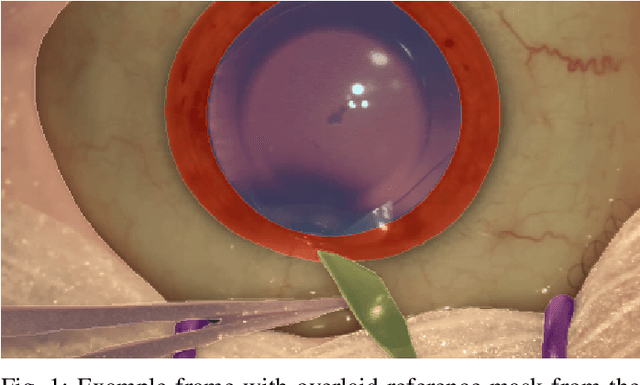
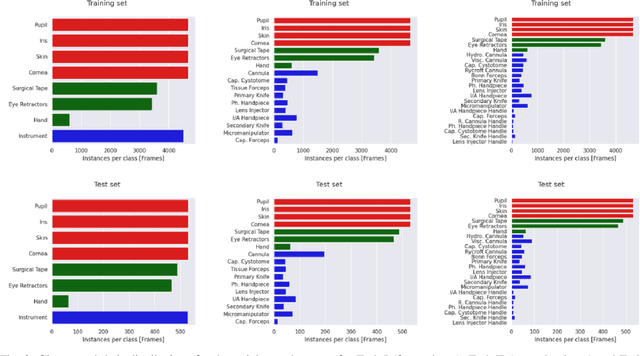
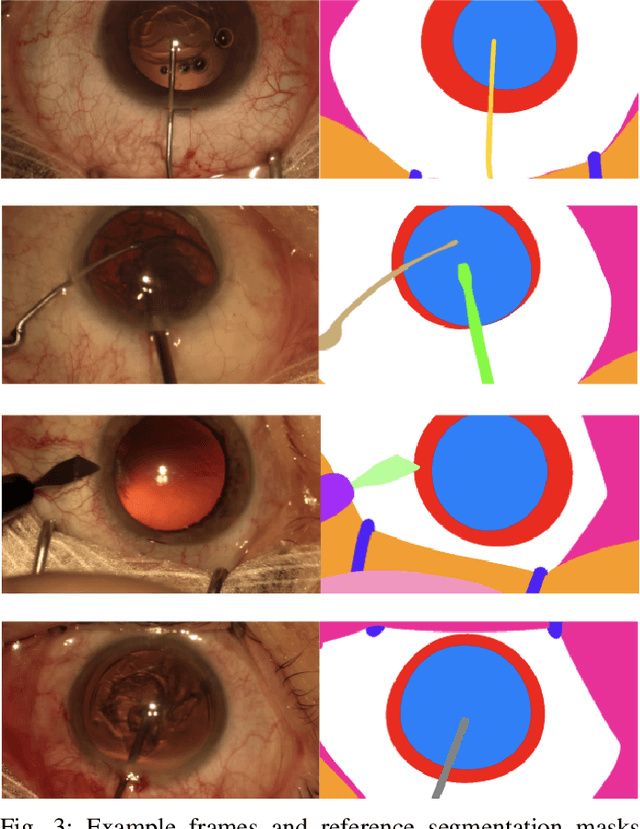
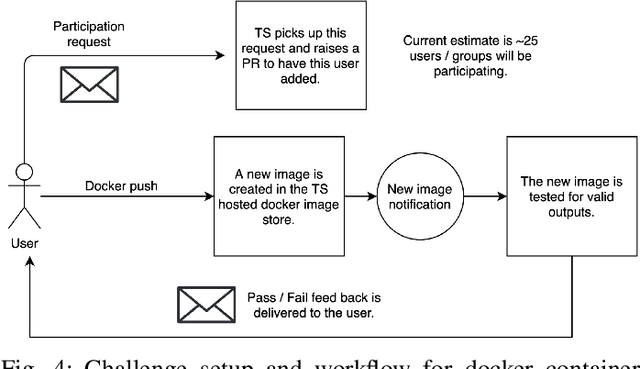
Abstract:Surgical scene segmentation is essential for anatomy and instrument localization which can be further used to assess tissue-instrument interactions during a surgical procedure. In 2017, the Challenge on Automatic Tool Annotation for cataRACT Surgery (CATARACTS) released 50 cataract surgery videos accompanied by instrument usage annotations. These annotations included frame-level instrument presence information. In 2020, we released pixel-wise semantic annotations for anatomy and instruments for 4670 images sampled from 25 videos of the CATARACTS training set. The 2020 CATARACTS Semantic Segmentation Challenge, which was a sub-challenge of the 2020 MICCAI Endoscopic Vision (EndoVis) Challenge, presented three sub-tasks to assess participating solutions on anatomical structure and instrument segmentation. Their performance was assessed on a hidden test set of 531 images from 10 videos of the CATARACTS test set.
Multi-Rate Nyquist-SCM for C-Band 100Gbit/s Signal over 50km Dispersion-Uncompensated Link
Jul 25, 2021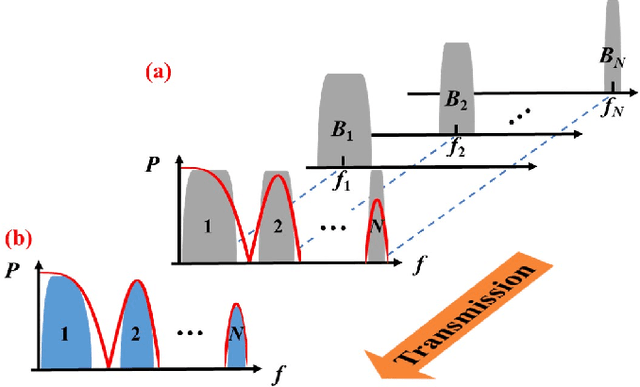

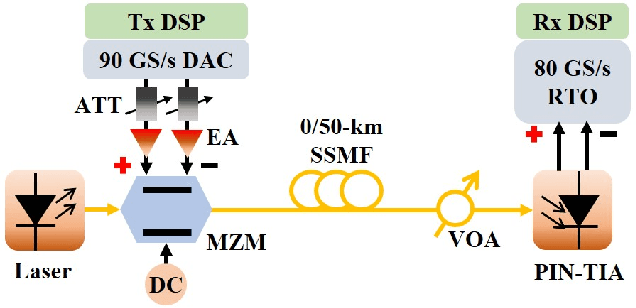
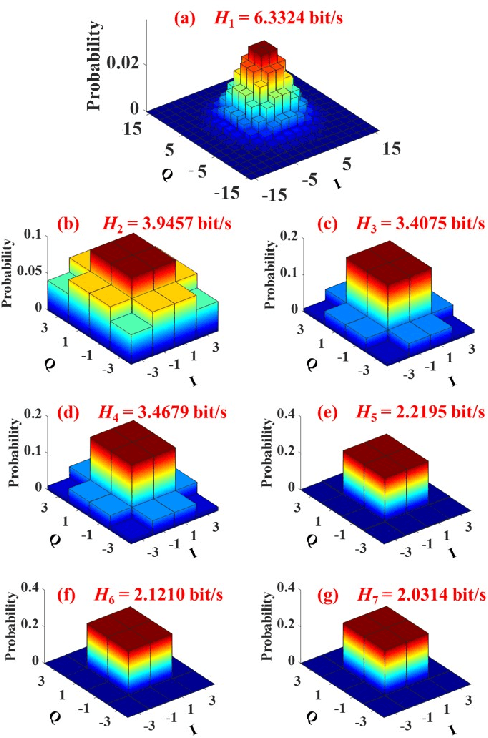
Abstract:In this paper, to the best of our knowledge, we propose the first multi-rate Nyquist-subcarriers modulation (SCM) for C-band 100Gbit/s signal transmission over 50km dispersion-uncompensated link. Chromatic dispersion (CD) introduces severe spectral nulls on optical double-sideband signal, which greatly degrades the performance of intensity-modulation and direct-detection systems. In the previous works, high-complexity digital signal processing (DSP) is required to resist the CD-caused spectral nulls. Based on the characteristics of dispersive channel, Nyquist-SCM with multi-rate subcarriers is proposed to keep away from the CD-caused spectral nulls flexibly. Signal on each subcarrier can be individually recovered by a DSP with an acceptable complexity, including the feed-forward equalizer with no more than 31 taps, a two-tap post filter, and maximum likelihood sequence estimation with one memory length. Combining with entropy loading based on probabilistic constellation shaping to maximize the capacity-reach, the C-band 100Gbit/s multi-rate Nyquist-SCM signal over 50km dispersion-uncompensated link can achieve 7% hard-decision forward error correction limit and average normalized generalized mutual information of 0.967. In conclusion, the multi-rate Nyquist-SCM shows great potentials in solving the CD-caused spectral distortions.
 Add to Chrome
Add to Chrome Add to Firefox
Add to Firefox Add to Edge
Add to Edge